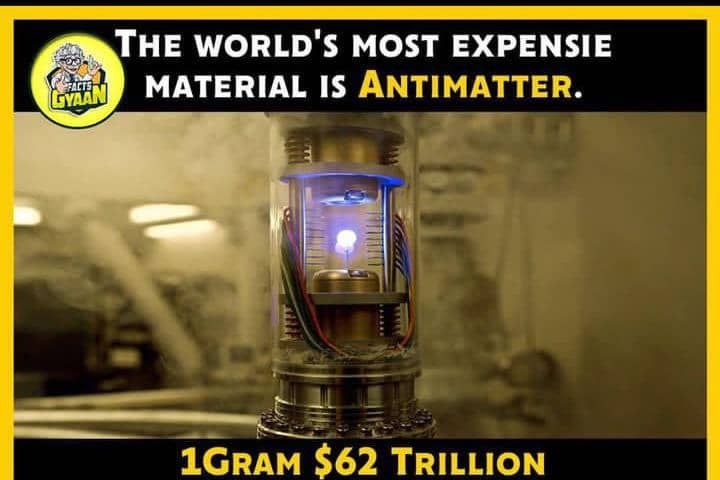At present, antimatter costs $62.5 trillion per gram. Projected improvements could bring this cost down to $5 billion per gram and the production level up ten times from 1.5*10^-9 to 1.5*10^-8 grams (from 1.5 to 15 nanograms).
antimatter was difficult to be created at the very early times of the Universe, the reason is still unknown… Obviously we live in a “matter” world with a low \% of antimatter, meaning that for some reason at some point matter was preferentially produced compared to antimatter…This goes around as matter-antimatter asymmetry.
What is antimatter?
Most people know that the basic nuclear particles that make up matter are protons, electrons, and neutrons. In 1930, Paul Dirac developed a description of the electron, which also predicted that an antiparticle of the electron should exist. This antielectron (also called a positron) was predicted to have the same mass as the electron but an opposite electric charge. Later, it was discovered that the other basic atomic particles had antimatter counterparts, the antiproton and the antineutron. When a particle and its antimatter counterpart meet, they are both annihilated, which means that the two particles disappear and their mass is converted to energy, following the principle embodied in Einstein’s famous equation E = mc2. As you may well know, “c” in this equation is the speed of light, which is a large number. Because this number is squared, this means that a small amount of mass can be converted to an enormous amount of energy. To give you an idea of how much energy is evolved during a matter/antimatter annihilation, this reaction is considered to be 100,000,000,000 times more powerful than a typical chemical explosion such as trinitrotoluene (TNT) and 10,000 times more powerful than a nuclear explosion.
How can you create antimatter?
To actually create antimatter, scientists focused on the simplest form of matter, hydrogen. A hydrogen atom consists of just one electron and one proton. This means that the simplest form of antimatter, an antihydrogen, is made up of an antiproton and a positron. The positron is attracted to an antiproton in the same way an electron is attracted to a proton.
The first antihydrogen was made in 1995 at the CERN (European Organization for Nuclear Research) super collider by colliding antiprotons with xenon atoms. This collision produces a positron, which is electrically attracted to another antiproton, subsequently forming antihydrogen. Unfortunately, it only takes a few millionths of a second for antimatter particles to come into contact with their matter counterparts, annihilating themselves and giving off energy. Because of this, scientists have worked on ways to make antimatter stable enough to be contained. The key was to slow the antihydrogens to keep them from colliding, and this was achieved by containing the antimatter in a bottle at just half a degree above absolute zero, the theoretically coldest achievable temperature. In 2011, scientists were able to hold produced antihydrogen for over 15 minutes using this method.
Why are the costs so high?
The reason for antimatter’s tremendous expense is easy to understand when you realize the technology involved in creating it. To make antihydrogen, the required antiprotons must be literally made one atom at a time using a particle accelerator. The CERN super collider is the most complex piece of machinery every constructed by humans. It took about a decade to construct, at a cost of about $4.75 billion. It is roughly 10 miles across and contains 9300 magnets, all of which must be super cooled to − 456.25° F using liquid helium. For the collision to occur, the particles are accelerated to 99.99% of the speed of light, which requires an incredible 120 MW of electric power, enough to power a large city. The collider has a total operating budget of about $1 billion per year, with electricity costs alone running at $23.5 million per year. When you also consider the fact that it has been estimated to take 100 billion years to produce 1 g of antihydrogen, you begin to see why the costs are so high.

